Shotgun Shooting
How to scent train your gundog
Training your gundog for scent detection can give you much better shooting days. But how does the gundog’s sense of scent work and what can you do to improve it?
Understanding scent and scenting conditions can really make a difference when you’re working gundogs. In truth, what that statement should have said is TRYING to understand scent and scenting conditions can make a difference. Because as human beings, I don’t think we can ever fully appreciate the power of a dog’s nose. Over the years I have watched hundreds of gundogs work in all sorts of conditions and the question of scent is a subject that can confuse even the most experienced handlers.
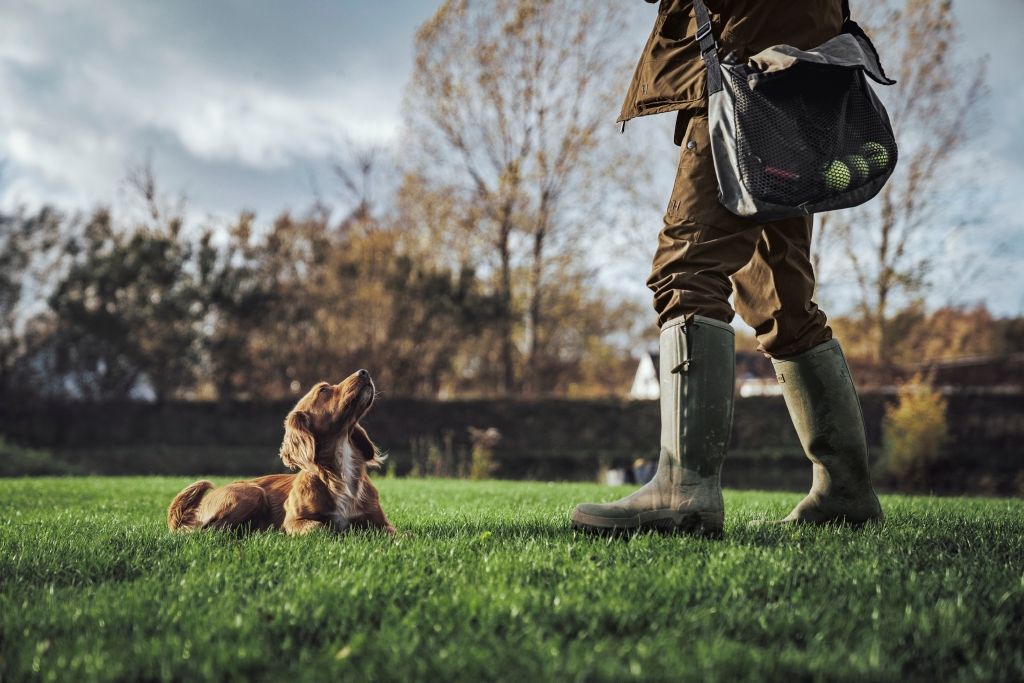
“Initially, when you start this training exercise always rub the rabbit or bird in a circle at the beginning of the line.”
WEATHER CONDITIONS
I can remember watching a retriever trial and on the last drive of the day, some birds had been shot and fallen in some fairly light cover. The air temperature was dropping extremely fast and a cold mist was beginning to fall.
You would have thought the scenting conditions would have been quite good, but I watched as two dogs failed to pick their retrieves. Both of them went straight over the top the birds. To this day I haven’t been able to work out what was going on, but I can only assume that the dropping temperature combined with the mist reduced the scenting conditions to nil and the dogs couldn’t see the birds.
It is generally accepted that on hot dry days the scenting conditions for any dog will be poor, also if it is pouring with rain it can make conditions exceedingly difficult. As a handler we should take the conditions into consideration and make allowances for our dogs if they are having trouble picking up the scent of shot bird. The other factor that is all too often overlooked is the wind and its direction.
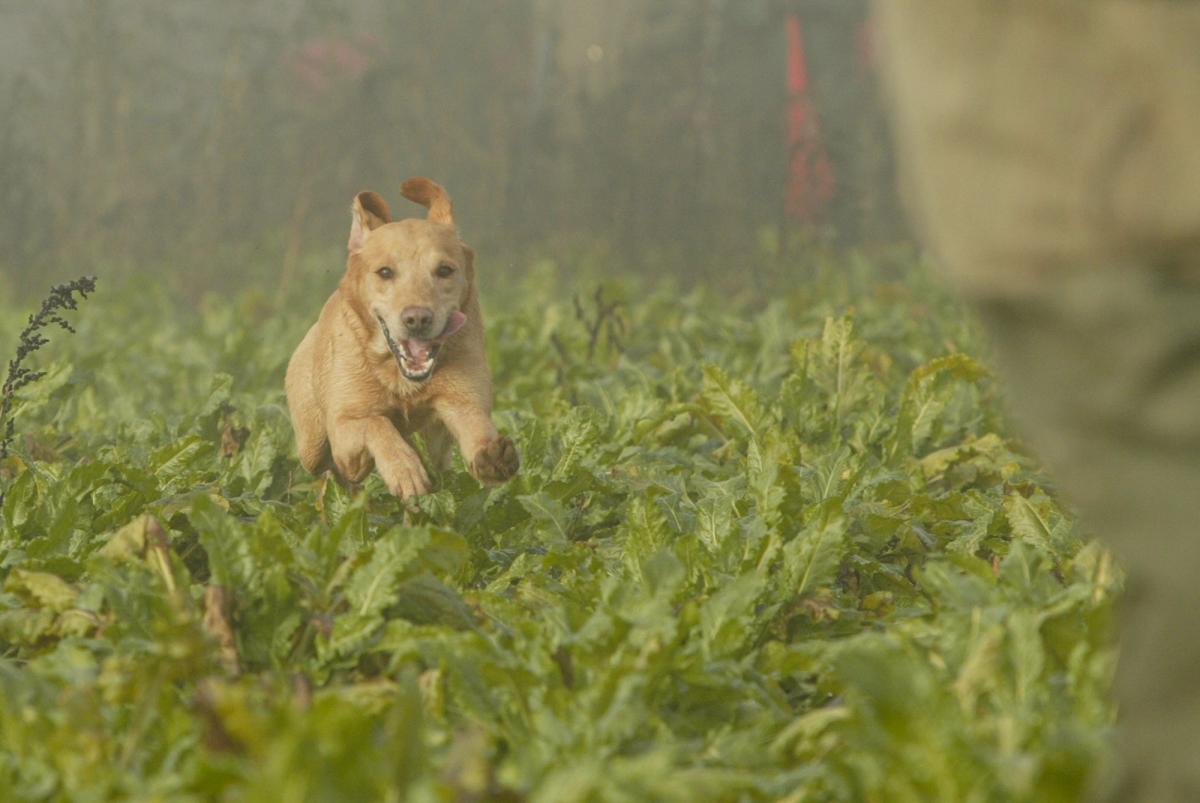
WIND DIRECTION
Handlers that run pointing dogs are often very aware of the wind and its effect on their dogs. Whenever possible, they will try and hunt the dogs into the prevailing wind which means any air scent will be coming straight towards the running dogs. In turn this helps to ensure they get the best out of their dogs hunting abilities.
But like everything to do with gundogs, it is not quite that straight-forward and occasionally as handlers we need to employ a degree of field-craft to help our canine shooting companions. Some years ago, I saw a very interesting demo given by a well-known German Shorthaired Pointer trainer. He used a smoke stick to show how the wind can eddy around trees and bushes at ground level… all very clever stuff but is it important? Well yes, it is.
Imagine you have a bird dropped by a tree in a field and the wind direction is coming from left to right. Logic dictates you should send your dog downwind of the bird. But the breeze may be disturbed by the tree and therefore any scent from the bird may not necessarily be distributed downwind. What may look like a straightforward retrieve therefore becomes quite testing for the dog.
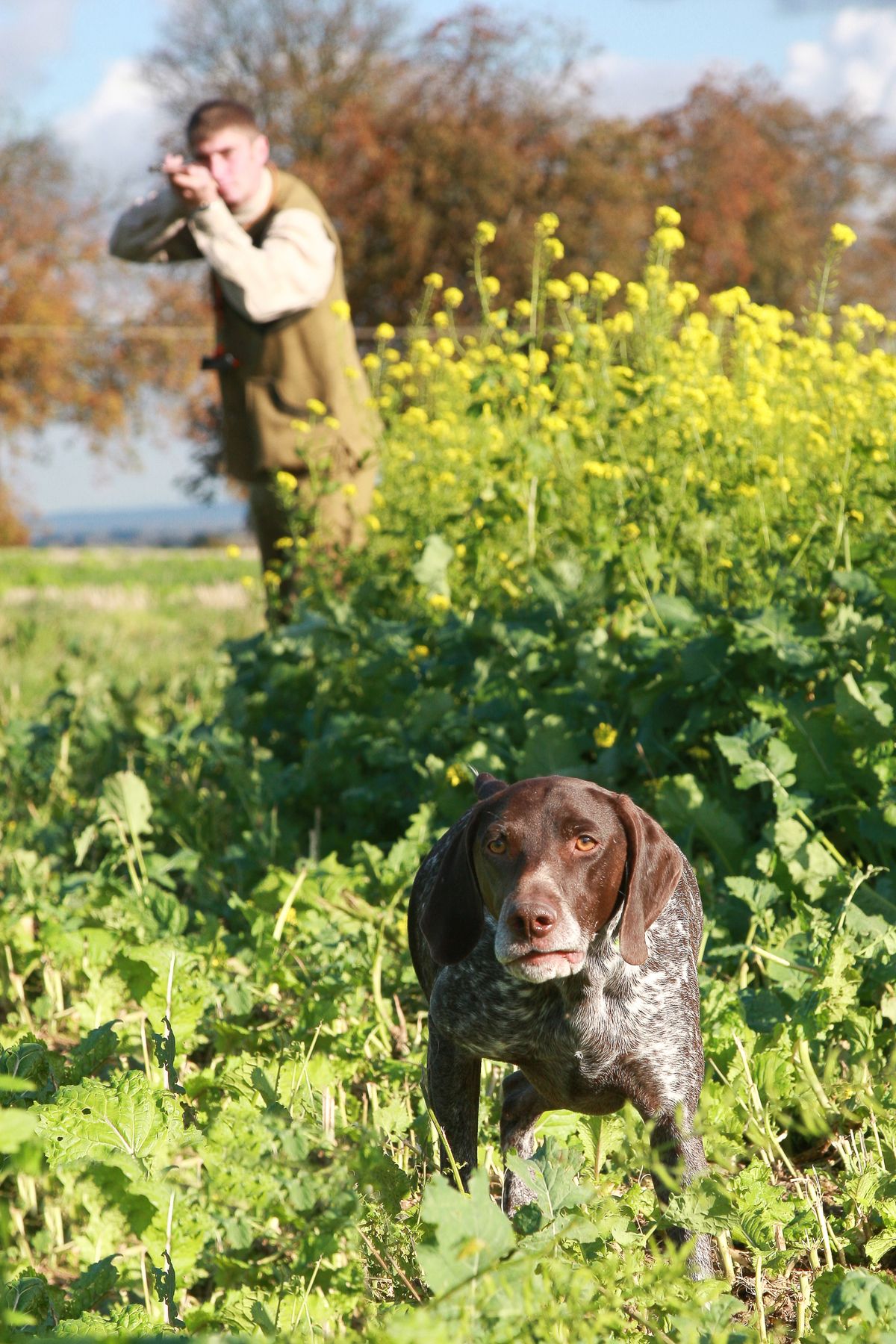
“HOT SCENT”
On the subject of ground scent, an experienced dog will be able to distinguish between “hot” foot scent from uninjured game and the scent from a shot bird that is either dead or injured.
When you think about it a dead bird will be giving off a blood scent but also there will be the gunpowder residue from the pellets, whereas an injured bird will also be emitting endorphins (a natural pain killer) and adrenaline.
I have noticed that when a dog is on the line of a runner, it seems to increase its pace quite significantly. I think this is because the natural instincts of the dog kicks in and it reverts to the predator tracking an injured prey. Fortunately for most of us, when the dog finds a runner it doesn’t kill and eat it but it retrieves it back to the handler and this in itself is quite remarkable.
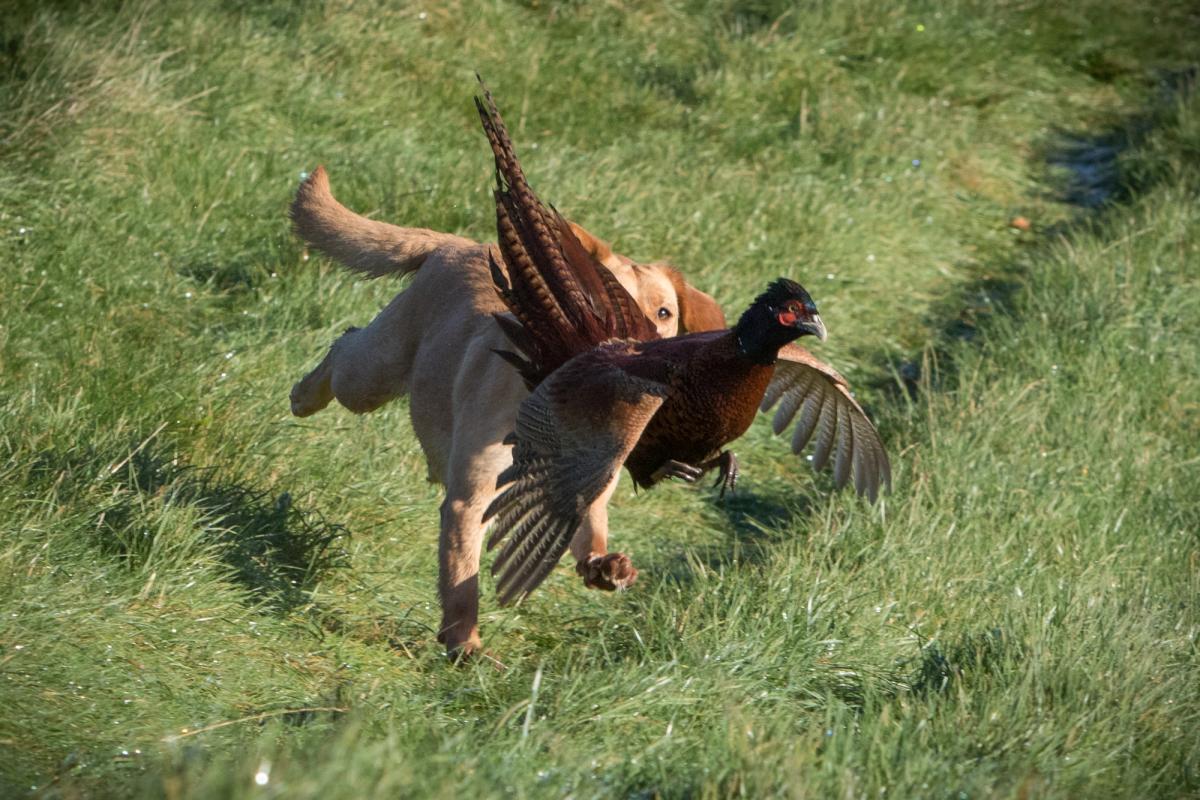
PERFECT CONDITIONS
A question that quite often gets asked and debated is “what are the perfect scenting conditions?” Well as humans we may never be able to properly answer that. But there is no doubt that it is quite noticeable that on warm days when the grass has a heavy covering of dew, dogs that normally work with their noses to the ground (Labradors and Spaniels) will lift their heads slightly.
That is because as the sun started to warm up the wet grass the water molecules will start to evaporate along with the scent of the retrieve and as a consequence the dog may be picking up the line about six to eight inches from the ground.
The HPR breeds, along with Setters and Pointers and even Flat coated and Golden Retrievers all work with a slightly higher head carriage and generally work on air scent rather than ground scent. But of course, all dogs can and do adapt their styles relative to the conditions.

TRAINING TIPS
Not everyone has access to ground where they can shoot over their dogs, especially when training them. However, you can still get your dog used to taking lines of shot game albeit cold game and artificial shot scent.
Most handlers will have either a dummy launcher or a starting pistol. You can then fire a blank onto a dead bird or rabbit and then you drag the retrieve on the end of a rope to create a scent line. Obviously do this whilst the dog is out of sight.

CREATING ARTIFICIAL SCENT LINES
Initially, when you start this training exercise always rub the rabbit or bird in a circle at the beginning of the line. This simulates the “fall area” and then to start with, drag it in a straight line. As the dog gets more confident, increase the distance and put a curve in the track which makes it more difficult for the dog.
You need to take the wind direction into consideration and initially you indicate to the dog the immediate area of the “fall”. Once the dog has acknowledged the scent, let him work it out from there. To watch a young dog working out which way the track goes is fascinating. And of course, to actually handle a dog on to a runner on a shoot day and to watch it bring back a lively cock pheasant is guaranteed to bring a smile to your face.

Another exercise that works really well is to create a line by using a tennis ball, preferably a fur covered one as this lays a better scent trial. It is better to have your dog with you and as you roll the ball, cover the dog’s eyes so it knows there is something for it to find but it doesn’t see where the ball ends up.
It is better to practice this when there is moisture on the grass as the ball will leave a better trail. As the dog grows in confidence, roll the ball at different angles and into heavier cover so the dog really has to learn to use its nose. You can also adjust your exercise, so the wind is coming from different directions. This will all help add to the dog’s experience.
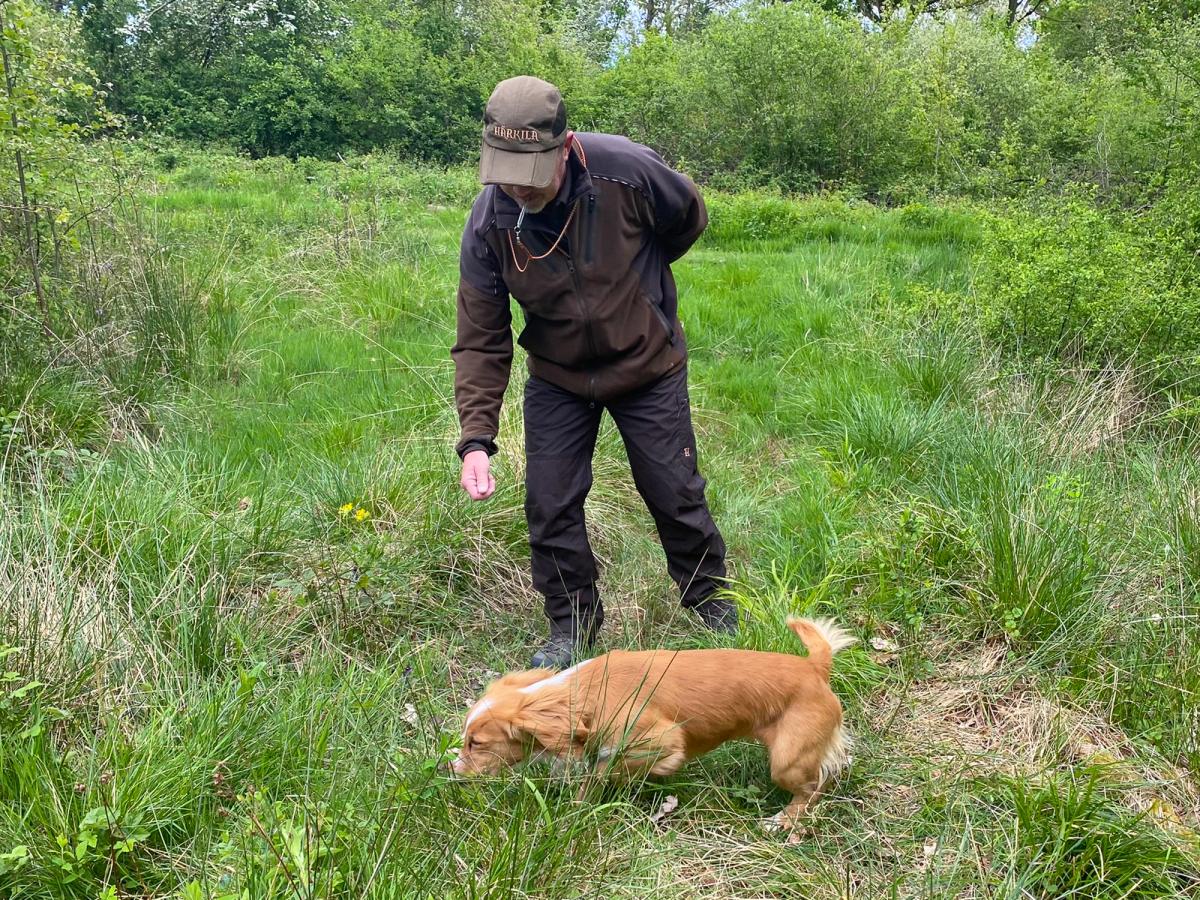
// Written in corporation with Nick Ridley, who is a steady contributor to a handful of British hunting magazines. He is one of Great Britain’s leading gundog photographers and an experienced gundog trainer //